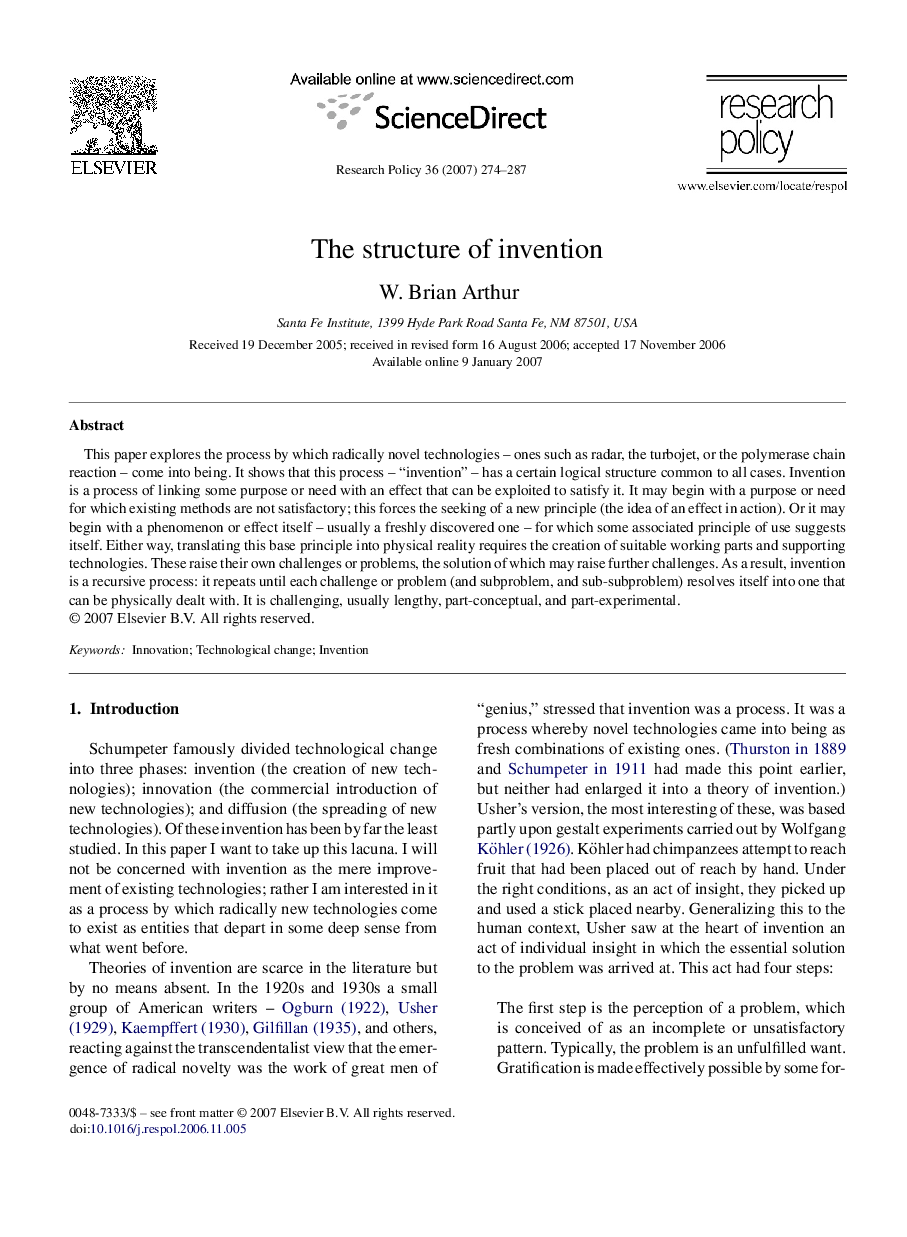| Article ID | Journal | Published Year | Pages | File Type |
|---|---|---|---|---|
| 984988 | Research Policy | 2007 | 14 Pages |
This paper explores the process by which radically novel technologies – ones such as radar, the turbojet, or the polymerase chain reaction – come into being. It shows that this process – “invention” – has a certain logical structure common to all cases. Invention is a process of linking some purpose or need with an effect that can be exploited to satisfy it. It may begin with a purpose or need for which existing methods are not satisfactory; this forces the seeking of a new principle (the idea of an effect in action). Or it may begin with a phenomenon or effect itself – usually a freshly discovered one – for which some associated principle of use suggests itself. Either way, translating this base principle into physical reality requires the creation of suitable working parts and supporting technologies. These raise their own challenges or problems, the solution of which may raise further challenges. As a result, invention is a recursive process: it repeats until each challenge or problem (and subproblem, and sub-subproblem) resolves itself into one that can be physically dealt with. It is challenging, usually lengthy, part-conceptual, and part-experimental.
